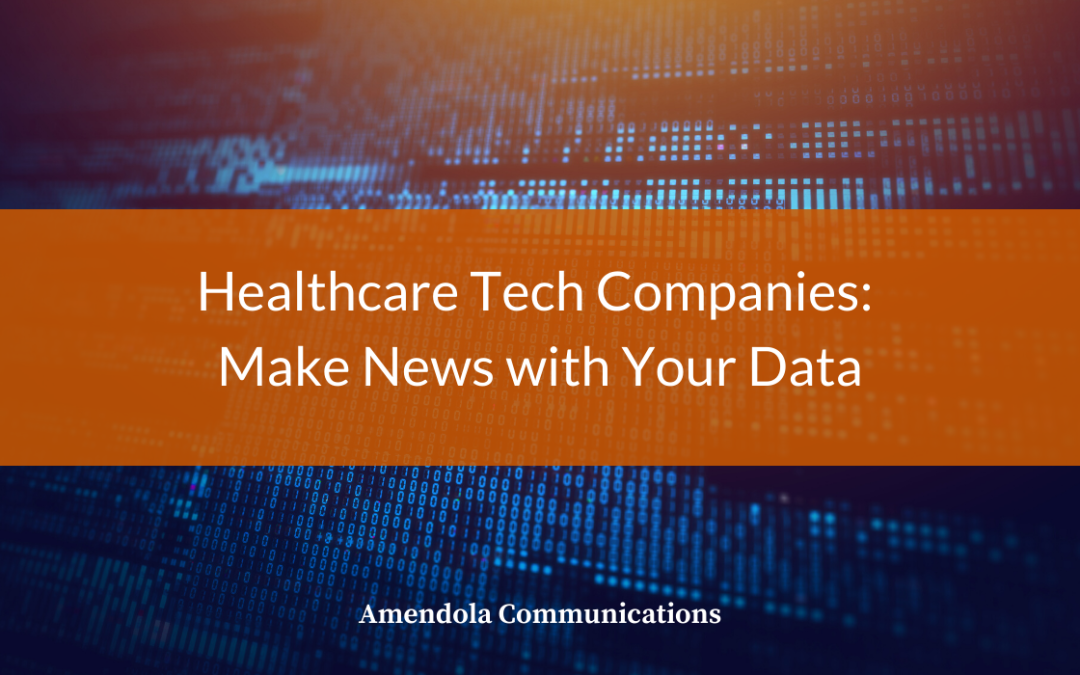
by admin | Dec 11, 2019 | Blog
Healthcare technology companies spend a lot of time urging providers and payers to become “data-driven.” But what about themselves? The fact is, most healthcare tech companies are sitting on goldmines of data that, given a little exploration, could produce intriguing and meaningful insights. In turn, these insights can become marketing and PR gold.
It’s not just analytics companies that have access to a lot of data. Any company that processes digital information in some fashion for its clients presumably has access to sizeable datasets. They are in a prime position to examine this data for patterns and trends.
A clearinghouse for medical claims, as one example, can spot trends in which claim types payers are more likely to deny, and for which reason. In another example, a company with care coordination technology can detect patterns about which health events and conditions require the most collaborative care. And of course, analytics companies have access to any number of data insights.
Once these insights are in hand, how to package them? Here are a few ideas:
- A graphical representation, such as a chart or infographic
- Industry reports
- Byline articles and blog posts
- Press releases
Or bundle all of the above into a larger campaign, especially for those data insights that are sure to make industry waves.
Start by capturing the main data points into a graphical format, which you can brand with your logo. Flesh out these findings in an industry report, which you can announce is now available via a press release. Further market the industry report with social media posts of your graphics.
Many tech-enabled companies outside of healthcare already do this and get national news coverage for it.
So, how can marketing and PR departments get these data insights? The answer lies in understanding what kind of data your organization processes, and forging relationships with the stewards of this data. Even one initial project can show the success of these efforts if the findings reap media coverage or increased social media interaction. And success tends to beget more success.
CEOs can also make it part of the data steward job description to share interesting findings on a monthly or quarterly basis.
The point is to remember that data isn’t just an asset for the healthcare tech company’s customer. It’s of value to the healthcare tech company, too; especially for those inevitable times when news is slow. Rather than wait for a big event to promote, shake up the industry with some big findings and make some data-driven news of your own.

by Stephanie Fraser | Nov 9, 2016 | Blog
Effective storytelling has always been an integral strategy of PR and marketing. But in today’s digital world, where online users are flooded with information, sometimes “showing,” rather than “telling” your story can be an effective approach for communicating your message.
Infographics are an excellent tool for turning content especially complex data into a colorful, compelling, easily digestible, visual. A truly successful infographic will utilize innovative design elements and robust data to capture your target audience’s attention and deliver important, educational information.
While not new, it is surprising the number of companies still not utilizing infographics as part of their content marketing strategy. In addition to helping drive brand awareness, infographics also attract website traffic, generate buzz and boost social media engagement. Here are five reasons to consider using infographics as part of your next PR/marketing campaign.
- Most online users don’t have the time to scroll through endless paragraphs of text. Infographics present information in a clear and concise manner and make mundane and heavy topics fun and easy to comprehend. Infographics help your audience understand your message effortlessly at glance.
- Individuals process visual content faster than long-form, written copy and are 80 percent more likely to read content if it includes colorful imagery. Infographics can make the most seemingly boring information blossom when displayed as a dazzling visualization.
- Research shows that infographics are liked and shared on social media 3X more than any other type of content. Top that with an infographic that includes a punchy design and some startling statistics, and your content has the potential to go viral. Bloggers value and admire quality infographics, so if you promote yours effectively, there’s a good chance it will be distributed among numerous social media channels. Infographics also have a much longer shelf life than traditional media since they are often shared months after they’ve originally been published. More shares mean more visibility for your business leading us right into number 4 on the list.
- If your infographic is making the rounds on blogs and social media, there is a good chance it’s boosting your SEO ranking. Ensuring that you add an embed code to your infographic makes it easy for your audience to share your content. The result is a wealth of inbound links, since the embedded image of your infographic automatically links back to your website, thereby elevating your search ranking. Add some targeted keywords in your infographic’s title or description, and you can amplify your page ranking even more.
- Infographics are one of the most successful ways to bring your content to smart phones, tablets and other mobile devices. As portable devices continue to be a fundamental tool for both consumers and businesses, information like infographics is much more conducive to viewing on-the-go. It’s also ideally suited for viewing on small screens.
It’s easy to see why infographics are a vital and effective tool for building brand awareness, engaging your audience, and making your message memorable. Just remember to keep the design and content of your infographic simple, creative and accurate. Don’t overshadow your data or confuse your audience with superfluous graphic elements. While an impactful design is essential, so is the quality of the information you are sharing so be sure you the sources you are citing are reliable. The visual component of your infographic may draw your audience in, but it is the content that educates, informs, and truly drives your message home. Get the picture?


